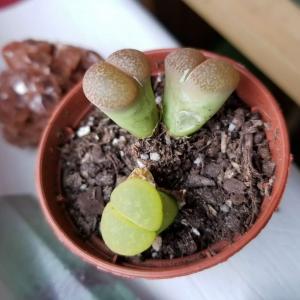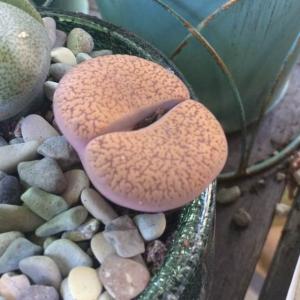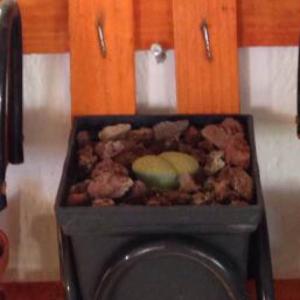文章
木木
2017年05月21日

#红大内玉 Lithops optica `Rubra`——番杏科生石花属,在生长期光照强的时候整个植物深红发紫,如果光照不够的时候颜色会慢慢褪去,甚至个别的整个红色都会褪去。不过强光照立马就会恢复原来的可爱红色的。盛花期是秋季,开白色花。
配土:珍珠岩混合泥炭,加蛭石和煤渣,比例随意,透气为主。表面铺就干净的河沙,2到4毫米,铺设石头的好处就是能够隔离土壤和植株接触,减少细菌的侵袭。纯净的河沙不容易停留太多细菌。

红大内这个品种可以暴晒,少水,水大就容易2脱,脱个没完没了。平时若观察到叶片起褶皱,就可以给水了,可以不怎么浇透。夏季是它们的休眠期,阳光强,弱小的植株一定要遮阳通风,7~9月休眠期阴凉通风养护。休眠期一个月给一点点水,维系根部的生长。9~12月是生长期和开花期,水分也是10天半个月给一次,每次沿着盆的边上,用水壶快速浇一圈。这样的水分足够红大内的生长了。整个寒冷的冬季,几乎不给水,一来是为了让植株更快的脱皮,二来也是防止低温冻伤。盆土干燥的情况下,红大内还是比较耐低温的,零下4度红大内不会出现任何变化,只要不是露天,这样的温度红大内还是可以承受的。
值得说说的是红大内的脱皮期,2到4月左右,这个时候的红大内需要强光才可以快速的脱去外衣,脱皮期禁止给水,一旦给水了,整个夏季都不定会脱的光。给水一定要在脱皮脱好后。脱好的植株才可以进入正常的管理期,直到夏季的休眠期。新购入的植株无论是在生长期还是休眠期,配土还是按照透气的原则配土,上盆后,一般给一次大水,等盆土干透后再给第二次,因为红大内相对于其他品种根系会微微短点,保持盆土的微湿,有利于新植株的发根,发根的时候保持阴凉通风,温度15到30度,发根快,30度以上,发根比较慢,10度以下也是比较慢的。植株长新根,可以通过植株的外表来观察,无论多么干巴巴的植株,一旦长新根,整个植株就会由原来的暗淡变的有光泽,一般恢复了光泽的植株就可以按照正常的养护期来养护了。
配土:珍珠岩混合泥炭,加蛭石和煤渣,比例随意,透气为主。表面铺就干净的河沙,2到4毫米,铺设石头的好处就是能够隔离土壤和植株接触,减少细菌的侵袭。纯净的河沙不容易停留太多细菌。

红大内这个品种可以暴晒,少水,水大就容易2脱,脱个没完没了。平时若观察到叶片起褶皱,就可以给水了,可以不怎么浇透。夏季是它们的休眠期,阳光强,弱小的植株一定要遮阳通风,7~9月休眠期阴凉通风养护。休眠期一个月给一点点水,维系根部的生长。9~12月是生长期和开花期,水分也是10天半个月给一次,每次沿着盆的边上,用水壶快速浇一圈。这样的水分足够红大内的生长了。整个寒冷的冬季,几乎不给水,一来是为了让植株更快的脱皮,二来也是防止低温冻伤。盆土干燥的情况下,红大内还是比较耐低温的,零下4度红大内不会出现任何变化,只要不是露天,这样的温度红大内还是可以承受的。
值得说说的是红大内的脱皮期,2到4月左右,这个时候的红大内需要强光才可以快速的脱去外衣,脱皮期禁止给水,一旦给水了,整个夏季都不定会脱的光。给水一定要在脱皮脱好后。脱好的植株才可以进入正常的管理期,直到夏季的休眠期。新购入的植株无论是在生长期还是休眠期,配土还是按照透气的原则配土,上盆后,一般给一次大水,等盆土干透后再给第二次,因为红大内相对于其他品种根系会微微短点,保持盆土的微湿,有利于新植株的发根,发根的时候保持阴凉通风,温度15到30度,发根快,30度以上,发根比较慢,10度以下也是比较慢的。植株长新根,可以通过植株的外表来观察,无论多么干巴巴的植株,一旦长新根,整个植株就会由原来的暗淡变的有光泽,一般恢复了光泽的植株就可以按照正常的养护期来养护了。
0
0
文章
木木
2017年05月20日

#生石花 属植物(Lithops)是番杏科一种高度肉质的多年生草本,地上部分是2片对生连接的肉质叶,叶面有色彩不一的半透明状结构,形状奇特,植株小巧,是多肉植物爱好者越来越喜欢的异类植物。
生石花通常用播种繁殖,繁殖要首先了解生石花的生长习性。生石花原产地南非及非洲西南部干旱地区,该地区阳光充足,冬季温度10℃以上,夏季30℃左右,但地表多石砾,沙砾表面温度可达到50℃以上。它是一种夏休眠植物。
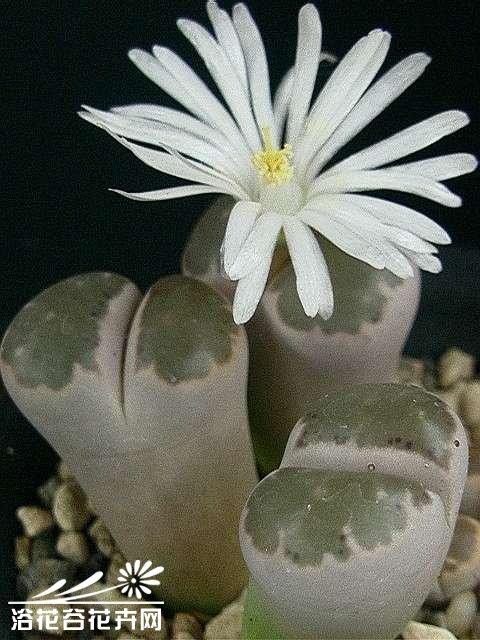
当我们收到生石花种子时,只要气候不是十分苛刻,应该立即播种,推迟播种的种子发芽率会降低,播种前要作好播种准备工作。
(1)播种时间。
一般春播在4月中旬以后,秋播在10月上旬最为有利。在冬季播种要注意温度,一般温度控制在10-25℃最好。
(2)播种钵。
播种盆最好使用瓦盆,瓦盆透气透水性好,土壤容易干,有利于种子发芽,其他的陶盆、紫砂盆等亦可,盆要用浅盆,土壤放入盆中厚度约10CM以下,盆上留边2-3CM。在冬季播种时为保持湿度,也可以用不透气的塑料盆等。
生石花通常用播种繁殖,繁殖要首先了解生石花的生长习性。生石花原产地南非及非洲西南部干旱地区,该地区阳光充足,冬季温度10℃以上,夏季30℃左右,但地表多石砾,沙砾表面温度可达到50℃以上。它是一种夏休眠植物。

当我们收到生石花种子时,只要气候不是十分苛刻,应该立即播种,推迟播种的种子发芽率会降低,播种前要作好播种准备工作。
(1)播种时间。
一般春播在4月中旬以后,秋播在10月上旬最为有利。在冬季播种要注意温度,一般温度控制在10-25℃最好。
(2)播种钵。
播种盆最好使用瓦盆,瓦盆透气透水性好,土壤容易干,有利于种子发芽,其他的陶盆、紫砂盆等亦可,盆要用浅盆,土壤放入盆中厚度约10CM以下,盆上留边2-3CM。在冬季播种时为保持湿度,也可以用不透气的塑料盆等。
1
1
求助
Ueca
2017年05月19日

What species of lithops is it? Why has it developed lateral wrinkles (shown in the second picture)?
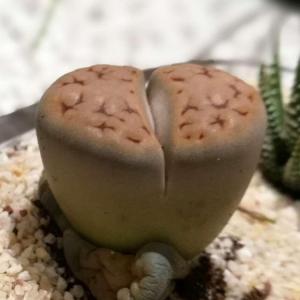
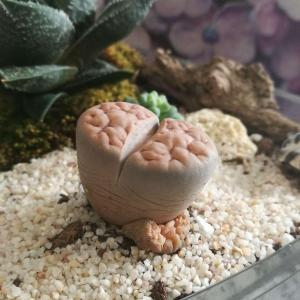


0
0
Ueca:For future reference: it turns out it was a lack of water.
求助
Cleaux
2017年05月06日

Anyone know this type of Lithops? The green one popped out of itself and I took one of the leaves off because it looked like it would attract problems, it look like it's doing well.
Do the pink ones look worrisome, or is it about to split open?
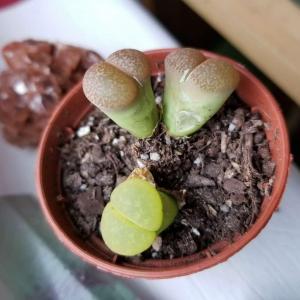
Do the pink ones look worrisome, or is it about to split open?

0
0
成长记
Stephanita
2017年03月19日

I new added a "Stone Faces/ Lithops Sspecies/ Mimicry Plant" in my "garden"


2
0
文章
stone
2016年12月28日
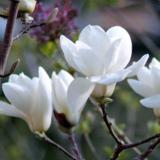
#lithops #living-stone #succulent Living Stones (Lithops) are unusual succulents that have evolved to resemble the pebbles and rocks that litter their native habitats through southern Africa. These very small plants hug the ground and grow extremely slowly. It can take years for a plant to eventually fill its pots with new leaves. Structurally, Lithops are comprised of two fused leaves above ground that connect to an underground stem with a long root.
The leaves are extremely thick and the degree of fusion depends on the species. Some species appear to be a single leaf, with hardly any evidence of the leaf fusion, while others are deeply lobed to the level of the soil. These plants are great collectibles, but require a careful hand with the water. Too much water and the leaves will burst or the plant will die from beneath. If you provide them with good conditions, they will flower in mid-to late summer with white and yellow daisy-like flowers that emerge from between the leaves.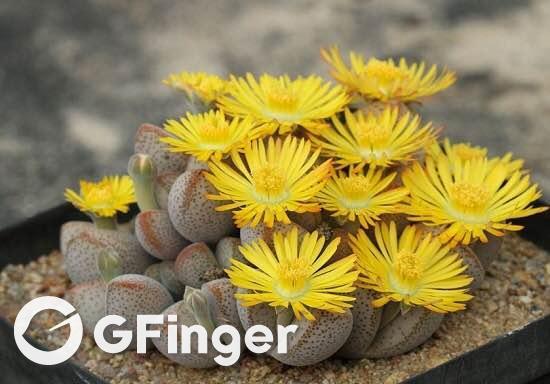
Growing Conditions
Light: Lithops thrive in full sunlight, so provide as much light as possible. Weak light will cause elongated leaves and washed out patterns on the leaves.
Water: Lithops have a definite annual cycle that should be carefully followed. In the summer, as the plants are dormant, it is okay to lightly water them if the leaves shrivel. In general, plants should not be watered during their summer dormancy or during the winter.
Temperature: Warm in summer (household temperatures are fine) and colder in winter months (down to 55˚F/13˚C at night).
Soil: Use a cactus mix or very fast-draining potting soil mixed with sand.
Fertilizer: Fertilizer is not necessary.
Propagation
Most Lithops species can be propagated from seeds. Seedlings typically take two to three years to reach maturity and begin flowering.
Repotting
Lithops are very slow growing, small plants, which makes them ideal as houseplants (once you get the hang of their watering schedule). Older plants form attractive clumps of “pebbles” in their pots, which are highly prized. In general, plants should only be repotted if there are cultural problems (soggy soil) or the plant has outgrown its dish container, which will only happen every several years。
Grower’s Tips
Lithops develop a new set of leaves every year, with new leaves emerging in the fall and growing through the winter and into the summer. In late summer, the plant will go dormant and water should be severely restricted to prevent bursting leaves. The flowers appear near the end of summer or fall, first showing up as a small bud forcing its way between the leaves and growth will begin again. It’s safe to water during this period. Heading into the winter, the leaves will still be growing, but you should stop watering, even as the older leaves shrivel up and encase the new growth. In the spring, it’s safe to begin lightly watering again as the plant begins to grow again, heading toward their summer dormancy period and the emergence of new leaves in the fall.

The leaves are extremely thick and the degree of fusion depends on the species. Some species appear to be a single leaf, with hardly any evidence of the leaf fusion, while others are deeply lobed to the level of the soil. These plants are great collectibles, but require a careful hand with the water. Too much water and the leaves will burst or the plant will die from beneath. If you provide them with good conditions, they will flower in mid-to late summer with white and yellow daisy-like flowers that emerge from between the leaves.

Growing Conditions
Light: Lithops thrive in full sunlight, so provide as much light as possible. Weak light will cause elongated leaves and washed out patterns on the leaves.
Water: Lithops have a definite annual cycle that should be carefully followed. In the summer, as the plants are dormant, it is okay to lightly water them if the leaves shrivel. In general, plants should not be watered during their summer dormancy or during the winter.
Temperature: Warm in summer (household temperatures are fine) and colder in winter months (down to 55˚F/13˚C at night).
Soil: Use a cactus mix or very fast-draining potting soil mixed with sand.
Fertilizer: Fertilizer is not necessary.

Propagation
Most Lithops species can be propagated from seeds. Seedlings typically take two to three years to reach maturity and begin flowering.
Repotting
Lithops are very slow growing, small plants, which makes them ideal as houseplants (once you get the hang of their watering schedule). Older plants form attractive clumps of “pebbles” in their pots, which are highly prized. In general, plants should only be repotted if there are cultural problems (soggy soil) or the plant has outgrown its dish container, which will only happen every several years。

Grower’s Tips
Lithops develop a new set of leaves every year, with new leaves emerging in the fall and growing through the winter and into the summer. In late summer, the plant will go dormant and water should be severely restricted to prevent bursting leaves. The flowers appear near the end of summer or fall, first showing up as a small bud forcing its way between the leaves and growth will begin again. It’s safe to water during this period. Heading into the winter, the leaves will still be growing, but you should stop watering, even as the older leaves shrivel up and encase the new growth. In the spring, it’s safe to begin lightly watering again as the plant begins to grow again, heading toward their summer dormancy period and the emergence of new leaves in the fall.
4
3
rebeccamee:Not so familiar with this plant but they look cute, will give it a thought to grow them if I have more room to keep all my succulents




